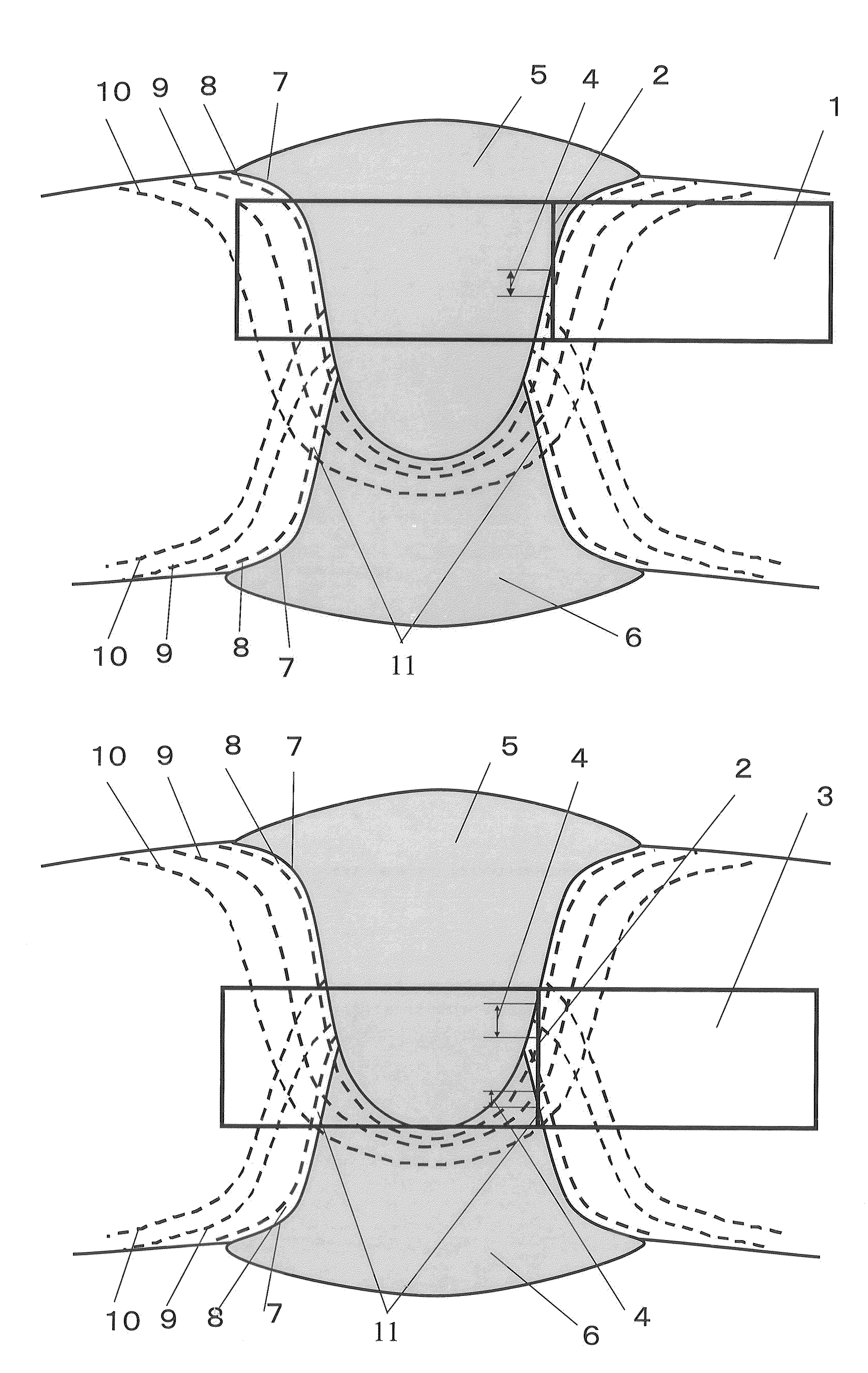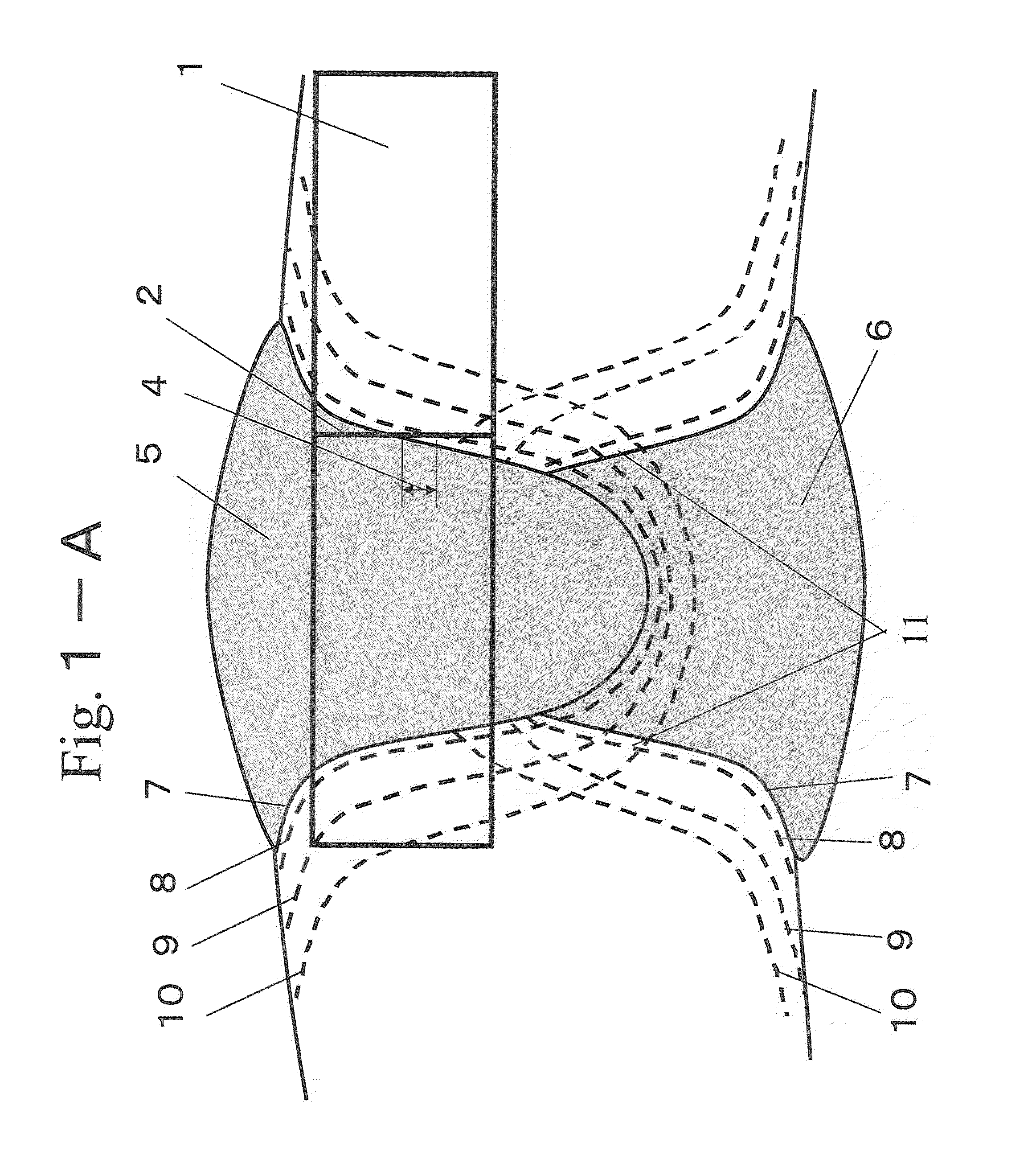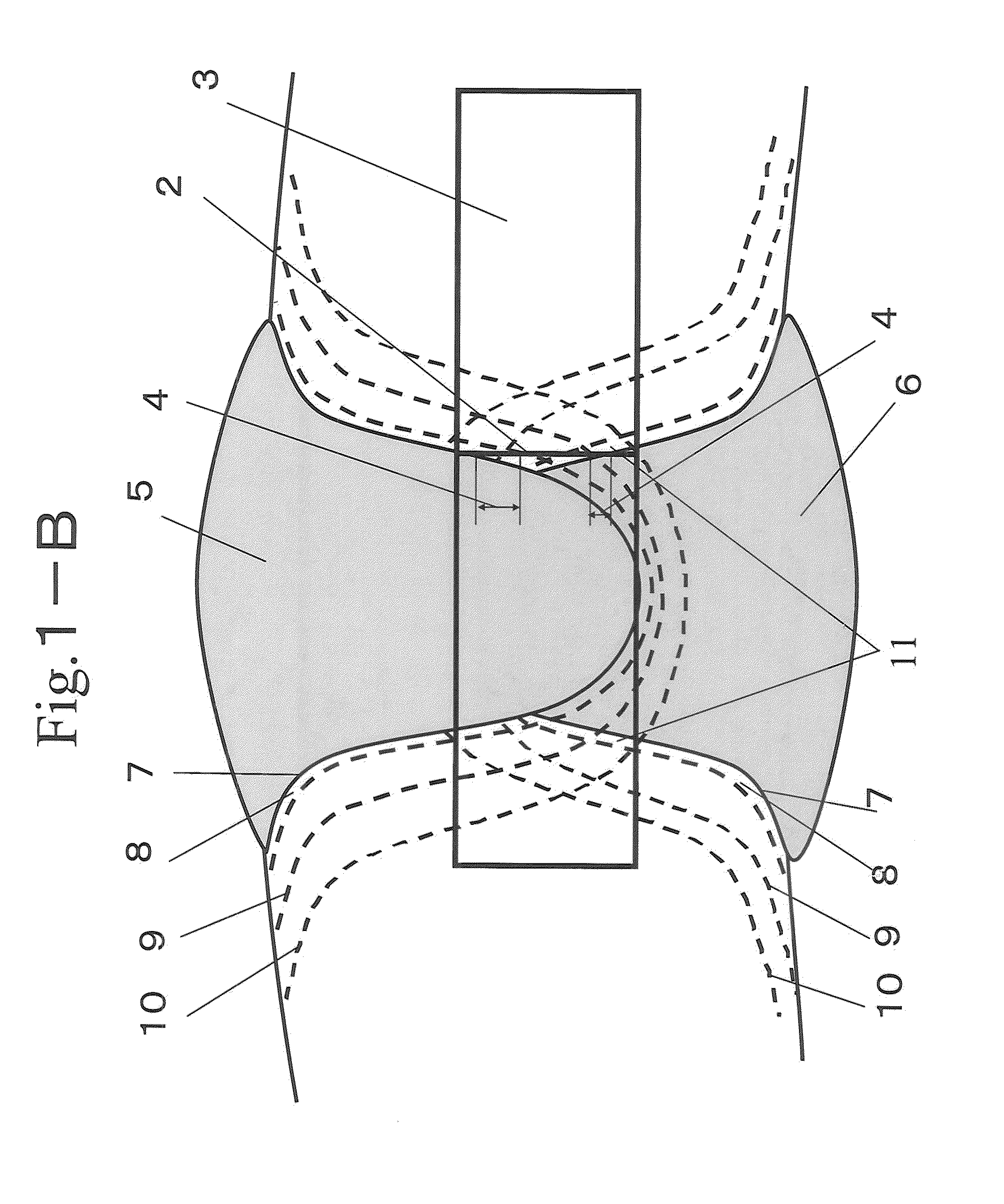High strength steel pipe for low-temperature usage having excellent buckling resistance and toughness of welded heat affected zone and method for producing the same
- Summary
- Abstract
- Description
- Claims
- Application Information
AI Technical Summary
Benefits of technology
Problems solved by technology
Method used
Image
Examples
example 1
[0155]Steels having various chemical compositions in Table 1 were refined with a steel converter and turned into cast slabs having a thickness of 170 to 250 mm by continuous cast. The cast slabs were then turned into steel plates 1 to 10 under conditions of hot rolling, accelerated cooling, and reheating in Table 2. The reheating was performed with an induction heating apparatus disposed together with accelerated cooling equipment on the same line.
[0156]The steel plates were formed by U-press and O-press and subsequently subjected to internal seam welding then to external seam welding by submerged arc welding. After that, pipe expansion was performed at an expansion ratio of 0.6% to 1.2% to provide steel pipes having an outer diameter of 400 to 1626 mm. Tables 3-1 and 3-2 show the chemical compositions of weld metal portions 6 and 5 for internal seam welding and external seam welding in the steel pipes 1-1 to 10.
[0157]To evaluate the joint strength of the obtained steel pipes, tensi...
example 2
[0170]Steels having various chemical compositions in Table 5 were refined with a steel converter and turned into cast slabs having a thickness of 160 to 250 mm by continuous cast. The cast slabs were then turned into steel plates 11 to 24 under conditions of hot rolling, accelerated cooling, and reheating in Table 6. The reheating was performed with an induction heating apparatus disposed together with accelerated cooling equipment on the same line.
[0171]The steel plates were formed by U-press and O-press and subsequently subjected to internal seam welding then to external seam welding by submerged arc welding. After that, pipe expansion was performed at an expansion ratio of 0.6% to 1.2% to provide steel pipes having an outer diameter of 400 to 1626 mm. Tables 7-1 and 7-2 show the chemical compositions of weld metal portions for internal seam welding and external seam welding of the steel pipes 11-1 to 24.
[0172]To evaluate the joint strength of the obtained steel pipes, tensile tes...
PUM
| Property | Measurement | Unit |
|---|---|---|
| Temperature | aaaaa | aaaaa |
| Temperature | aaaaa | aaaaa |
| Temperature | aaaaa | aaaaa |
Abstract
Description
Claims
Application Information
 Login to View More
Login to View More - R&D
- Intellectual Property
- Life Sciences
- Materials
- Tech Scout
- Unparalleled Data Quality
- Higher Quality Content
- 60% Fewer Hallucinations
Browse by: Latest US Patents, China's latest patents, Technical Efficacy Thesaurus, Application Domain, Technology Topic, Popular Technical Reports.
© 2025 PatSnap. All rights reserved.Legal|Privacy policy|Modern Slavery Act Transparency Statement|Sitemap|About US| Contact US: help@patsnap.com



